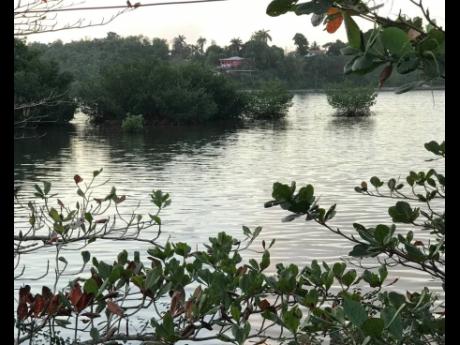Earth Today | Scientist insists on enhanced investment in coastal ecosystems
WITH JAMAICA and the Caribbean still under the weight of climate change threats, despite the prevailing COVID-19 pandemic, the case was recently made for a scale up of investment in holistic coastal ecosystems, such as mangroves, seagrasses and coral reefs.
The arguments were recently advanced by Professor Mona Webber, Director of the Centre for Marine Sciences at the University of the West Indies and head of the Discovery Bay Marine Laboratory during a TEDxWorthington talk.
“Although compromised, these coastal ecosystems are critical in the fight against climate change effects and they still offer the capacity to recover and the capacity to recover against the ravages of climate change,” she said in her opening salvo.
“Mitigating their destruction and loss is very important because Jamaica and the Caribbean has as much as 75 per cent of the population living in the coastal zone and, in fact, if you consider coastal as far inland as the effects of the sea is felt, then the entire island is coastal,” she added.
Among the climate threats facing the Jamaica and the region are sea level rise, extreme hurricane events and extreme droughts. At the same time, the implications of these impacts extend to impaired food and water security.
Included in the prescribed response is the need to advance mitigation efforts, as reflected in a slowing of global warming which is fueled by greenhouse gases, including carbon dioxide; and adaptation, which is about advancing interventions that build coping capacity.
COMPROMISED ECOSYSTEMS
Investing in compromised coastal ecosystems ticks both boxes.
“Mitigating through coastal ecosystem rehabilitation has convinced us that we have the ability to adapt and it depends on having healthy coastal ecosystems. And so the UWI and its partners haver esearched effective approaches to mangrove ecosystem rehabilitation,” Weber explained.
Their efforts, she said, extend as far back as 2008 when they had their first coastal plant nursery for mangrove seedlings and then again in 2011.
“These nurseries can produce up to 20,000 seedlings and these seedlings are acclimated so they are appropriate for the conditions in which we need to plant them,” Webber told The Gleaner.
“But also in 2008, we benefitted from a workshop from the late Robin Lewis III and here we had real hands-on exposure to mangrove rehabilitation. So now we have our own mangrove rehabilitation expert, Mr. Camilo Trench,” she said.
The first order of business, she noted, has been to survey the mangroves to see what caused damage and loss, with approaches including removing blockages to water flow.
“These blockages can include mounds of garbage compacted over many years in the forest; wood; downed trees from hurricanes; and marl, construction material, dumped in the middle of mangrove forest in order to reclaim land, usually for squatting,” she said.
“By removing these blockages, we are simply restoring the water flow and allowing the mangrove to regenerate and re-green itself. We are simply fixing the damage we have done and the conditions needed to thrive will return. In fact, seedlings from adjacent healthy mangrove forest usually repopulate the degraded forest and it re-greens without the need for planting one nursery-reared seedling,” Webber added.
Still, she said that for all their efforts, they had only rehabilitated “a mere eight hectares of mangrove forest across Jamaica”. Mangroves, she said, are too valuable to allow this to stand.
“Because we know that mangroves can remove carbon dioxide a hundred times faster than terrestrial forest, we are very interested in scaling up our efforts,” she said.
WELCOMED SUPPORT
They have sought to make that happen, with the welcomed support from the Inter-American Development Bank last June to rehabilitate some 3,500 hectares of mangroves in south central Jamaica.
“This will increase Jamaica’s mangrove cover by over a third. I am really looking forward to this,” the Centre for Marine Sciences boss noted.
It is important, she insisted, that those efforts not stop there and extend to the rehabilitation of seagrasses and coral reefs, which represent such incredible value in the way of ecosystem services.
With respect of coral reefs, for example, Webber said, “they don’t sequester carbon but the reef is the first line of defence in the Caribbean and Jamaica against coastal erosion and storms”.
“Further, the value of a healthy reef to our economy, to support fisheries and tourism, is unquestionable,” she added.
However, the ecologist said, “reefs are not easy”.
“We were challenged to effectively restore and rehabilitate ecosystems dominated by a tiny, delicate animal that grows extremely slowly, sometimes as slow asfive millimeters a year, and secretes this rock-like structure that you call a reef,” she said.
Fortunately, they have come up with interventions that support their rehabilitation, but there is yet need to go a step further.
“It is often said that protecting the environment would constrain or even undermine economic growth. The fact is the opposite is true. Unless we protect the resources of the earth’s natural capital, we shall not be able to sustain economic growth,” Webber said, quoting former UN secretary general Kofi Annan.
“And I add, we shall not be able to survive the rages of climate change,” she noted.


